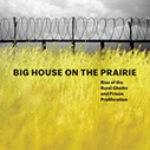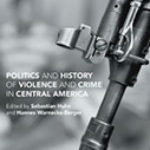The Para-State: An Ethnography of Colombia’s Death Squads

Author: Aldo Civico
Publisher: Oakland, CA: University of California Press, 2016. 264p.
Reviewer: Gabriela Manrique Rueda | September 2016
In his book on paramilitary groups in Colombia, Aldo Civico, professor of anthropology at Rutgers, goes beyond reflecting on fear and terror in contexts of paramilitary violence. Adopting a comprehensive approach to investigating the perpetrators, Civico shows that the paramilitaries are more than “soldiers who are not really soldiers but more like ghosts flitting between the visible and the invisible, the regular army and the criminal underworld of killers and torturers” as they were defined by Michael Taussig (2003, p. xi) a decade ago. The author goes from the fantasy to the real by describing the reality of the experiences of the paramilitaries. Based on very rich and brave fieldwork between 2003 and 2008, one of the most critical periods of paramilitary violence in urban and rural areas in Antioquia; and conducting interviews with victims, paramilitary leaders and combatants, the author dares the difficult enterprise of understanding the point of view of men who only a few with a minimum knowledge of human rights in Colombia have been willing to give the chance to explain their actions. Well-written, in a direct and honest way, the book provides a fine descriptive analysis of the experience of an anthropologist doing fieldwork that demonstrates the relevance of considering the points of view of the paramilitaries in explaining paramilitary violence. The book aims to understand the circumstances, experiences and interpretations that lead the paramilitaries to join the groups, and the meanings they give to their experiences. This is an important task for explaining the mass violence that has been being perpetrated by these organizations against “outsiders” in Colombia since the 1970’s.
Civico reconstructs the history of paramilitary groups through the life stories of the paramilitaries. Chapter 1 presents his interview with “El Doctor,” whose story exemplifies the participation of drug traffickers who have been victims of the guerrillas in the formation of paramilitary groups in the Magdalena Medio region in the 1980’s; and who became charismatic leaders and mediators of conflicts. Civico shows that the perceptions of cattle ranchers who were victims of the FARC at the end of the 1970’s are important for understanding the formation of self-defense groups in 1982 that resulted from an alliance between militaries, businessmen, a petroleum multinational company and a group of ranchers — all of whom aimed to eradicate the Communist Party and the FARC. These movements were represented as a cancer within the frame of the Cold War discourse against subversion and the theory of the weakness of the state. Chapter 2 presents the life story of Jorge Andres, a former combatant of the bloc Cacique Nutibara, that is representative of the experiences of poverty and abuse lived by young men of single parent families in Medellin who were recruited by the paramilitary after their military service. This is followed by the history of Luna, a former executioner wanting to be rehabilitated. Belonging to a family of members of guerillas and paramilitaries, the history of Luna shows that participation in paramilitary groups is a job opportunity, and it is also represented as a way to protect the security of civilians. The experience of Luna as an executioner helps to explain the micro-dynamics of violence in Uraba, where the highest numbers of civilians were killed. In addition to economic incentives, the development of an addiction to killing is crucial in explaining violence at the individual level. In Chapter 3, Civico offers an interesting interpretation that enables making a link between the individual executioner and the goals of violence at a macro level:Limpieza, or social cleansing, transforms the body of the radical as an act of purification aiming to educate, and to produce “otherness.” Power is produced and reproduced through the political ritual of limpieza, but what is interesting in Civico’s analysis is that he shows that violence is a discharge of energy, a luxury, a show, a sexual activity and a game that is executed just for the experience of violence in itself, and this experience is what at the end is power. The paramilitaries were trained in techniques to cut the body into pieces, and the act of killing became (sexual) pleasure and entertainment. The last interview presented in Chapter 2 is the one with Doble Cero, whose story shows the confluence of the social history of military and paramilitary institutions. The grandson of a military soldier who fought during the war of the 1000 days, Doble Cero started using civilians as informants as a member of the army. His story exemplifies the performance of security activities in public and private, the legal and illegal sectors such as the army, multinational companies, and illegal or pseudo-legal private groups that are characteristic of the careers of paramilitary commanders. Chapter 4 describes an ethnography of a region of cocaine production called Bajo Cauca, showing that in this reality cocaine is a principle of organization of social life that is the main economic source of income of the population, but it also determines life and death and the fantasies and aspirations of the people. Chapter 5 is theoretical and makes a parallel between the Italian mafia and Colombian paramilitary groups, showing the intreccio or intertwinement between these organizations and the state. Chapter 6 describes the process of demobilization of the bloc Cacique Nutibara in Medellin. It shows that after demobilization, the paramilitaries continue to dominate popular neighborhoods in Medellin through social work. The paramilitaries continue to be an interface between the illegal world and the state. In that sense, the so-called “para-state” is an important contribution that offers a cartography of the social history of paramilitary groups in Antioquia from the formation of self-defense groups in the Magdalena Medio to the demobilization of the Cacique Nutibara in Medellin. It contains very rich material on the social history of paramilitary members and their victims. The material is presented literally, giving richness to the book, but further work could make a theoretical contribution to explaining the careers and trajectories of the paramilitaries and the violent acts of the perpetrators.
Reference
Taussig, M. (2003). Law in a Lawless Land: Diary of a Limpieza in Colombia. Chicago: University of Chicago Press.
Gabriela Manrique Rueda is a Candidate for the Ph. D. at the School of Criminology at the University of Montreal. She is the author of “To Prevent the Existence of People Dedicated to “Causing Trouble”: Dirty Work, Social Control and Paramilitaries in Colombia”,British Journal of Criminology (2016) 56 (1): 87-104


